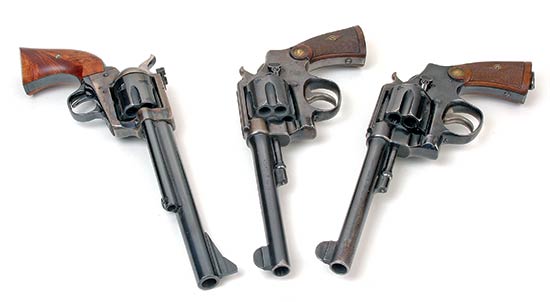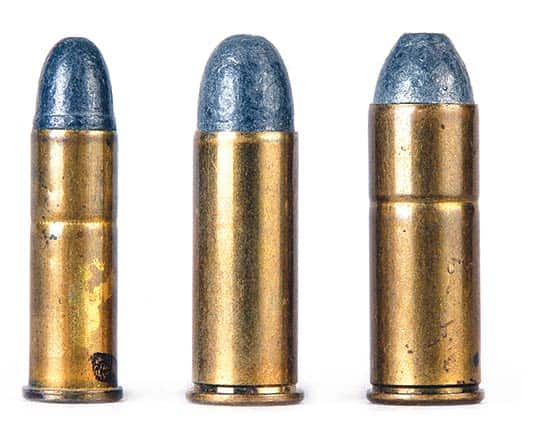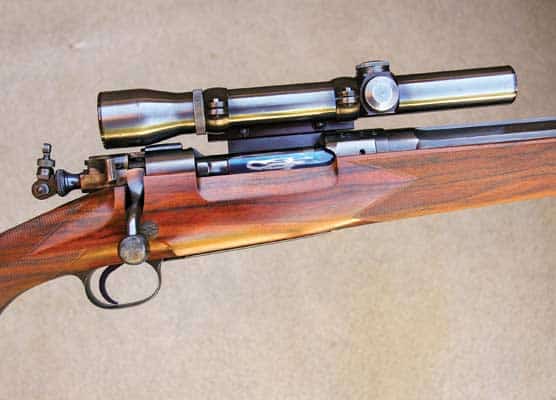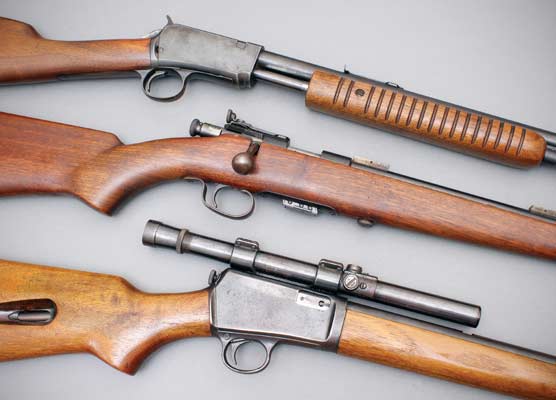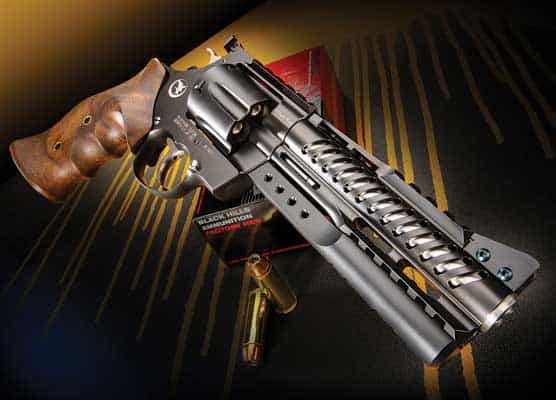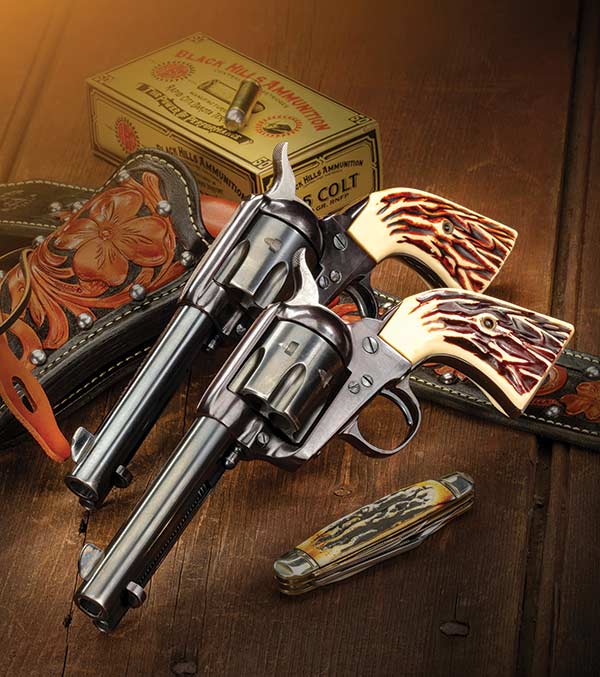Point Of Aim Vs. Point Of Impact
How To Bring 'Em Together
Hitting a target with a handgun bullet requires a bit of hand-eye coordination and small motor skills in your fingers and hands. It also requires understanding point of aim (POA) in regards to point of impact (POI). Handguns cannot — and do not — place all bullets where aimed.
If you don’t believe that last statement, have someone aim straight away with a big-bore revolver, such as an old S&W N-Frame or Colt New Frontier. Then stand a dozen feet to the side and look carefully. Its muzzle will be pointed slightly downwards. That’s due to a simple law of physics saying that for every action there is an equal and opposite reaction.
For handgunners, that means as soon as the bullet begins moving down the barrel, recoil begins pushing the barrel upward. With cartridges such as .45 Colt, .44 Special, etc., with heavy, slow-moving bullets, the revolver’s muzzle actually has to be pointed noticeably down so the bullet exits when recoil brings it up to level. The gun manufacturers calculate that factor into the heights of their front sights. Back in the day when there wasn’t much choice in factory load bullet weights, this was simple. They simply regulated a .45 Colt revolver for 250-grain bullets, a .44 Special for 246-grain bullets, a .38 Special for 158-grain bullets and so forth. That’s the reason why front sights are so tall on older revolvers, especially those for big calibers.
Big Changes
Now get this: In modern times the ammo companies have wanted to speed up older cartridge ballistics but needed to stay within SAAMI specs. That required a lighter bullet, as in 225-grain ones for .45 Colt and 200 grains for the .44 Special. Now those older revolvers have low point of impacts in relation to their point of aims. Somebody out there is saying, “Huh?” You bet: lighter bullets = less recoil = less muzzle flip = lower POI. The most severe case of this I’ve experienced has been with .38 Special revolvers. In that caliber you can buy (or in the past have been able to buy) factory loads with bullets as light as 95 grains and as heavy as 200 grains. I’ve actually fired loads with bullets varying that much from my old 5″ K-Frame Military & Police revolver. The POIs of those bullets varied by about a foot at 25 yards.
To help illustrate this article I fired two handguns with two different bullet weights each. One was a S&W Hand Ejector, 2nd Model .44 Special with 250-grain Black Hills ammo and 200-grain Winchester Silvertip factory loads. The other was a S&W Military & Police .38 Special with the aforementioned 95-grain Silvertip load by Winchester and a Cowboy Action load by CCI with 158-grain lead bullet. Both loads in each revolver were fired at the same point of aim at 20 yards. Coincidentally, in each case, the light load impacted 5 1/2″ lower than the heavy load.
Here’s another factor — velocity. All other factors equal, if you speed up a bullet it will have a lower POI than a slower one of equal weight. That’s because it’s in the barrel for a shorter period of time, hence less muzzle flip. No wonder in our modern era with our abundance of factory loads, adjustable handgun sights have become so common.
Is it starting to seem like a miracle anyone’s handguns are ever sighted-in? For instance, at times I’ve shown photos of groups fired with my own handguns and they aren’t centered in the bull’s-eye. Readers have commented on that.
Extenuating Factors
One is the Ransom Pistol Machine Rest I often use when testing a considerable number of rounds for accuracy. That apparatus minimizes human error, especially shooter fatigue. It also changes the dynamics of a handgun’s recoil because the rest is solidly anchored to something. Mine is bolted to the top of a beam that is integral with the construction of my shooting house. Heavy bullets still have a higher POI than lighter ones, but the POA is all out of kilter compared to when the same handgun is hand-held. For me the Ransom Rest causes the POI to be lower and to the right from when I fire the same handgun and load in my own two hands.
I sight my handguns in from a standing, 2-handed position. And I certainly don’t do any sight movement after just one shot. My zeroing of a handgun’s sights is performed by judging from an at least a 5-shot group. To do this you must be confident of your shooting ability. Let me say up front I’m not one of the world’s best handgun shooters. What I have at least learned to do in 45 years of handgunning is know when I pulled a shot. For my purposes, when zeroing the gun, that errant shot is ignored and the sights adjusted by the group’s center.
Again, ammunition factors must be considered. You must sight in a handgun with the exact load with which it will be used. Of course, re-sighting an adjustable sighted handgun is a simple matter. All that’s required is a proper fitting screwdriver. Re-zeroing a fixed-sight handgun is a much different matter and can be a major pain in the butt. I’ve discussed the mechanical details of sighting in fixed-sight handguns in past so we won’t get into it here.
Ammo
Be sure of this too: All ammunition is not created equal. Let’s say you sighted in your .45 ACP pistol with handloads carrying 230-grain FMJ bullets. Then in a desire to economize, you decide to substitute lead alloy, 225-grain roundnose bullets. Don’t count on both bullet types giving the same POI with the same POA. They may, but they may not. A change in POA could be caused by the fact lead alloy bullets give less resistance in a barrel than jacketed ones. Not only will that result in a velocity difference, but also in a difference in the pistol’s recoil dynamics.
Here’s another example. Just because you sighted in your .45 Colt revolver with X-company’s 250-grain bullet doesn’t mean it will also be zeroed with company Y’s version of that load. Chronographing such loads has sometimes shown me as much as 150 fps difference between brands of .45 Colt with 250/255-grain bullets. There’s no way loads varying that much can give the same POI with the same POA. If you rely on factory ammo, my advice is to buy it by the case and then verify your POI again when buying the next case.
And finally, what is a good POA? Anyone who started their handgun-shooting career in bull’s-eye-type competition was taught the 6 o’clock hold. That is, put the bull’s-eye atop the front sight, but have the sights adjusted so the POI is centered. That’s all well and good on a level range with targets of a known size. Out in the real world when shooting at angles, at targets of various sizes, and in competitions where speed is a factor, I prefer to have my POI be the same as POA.
I can live with POI a little bit higher than POA as long as I know it, but I don’t want it off laterally, and I never want it to be lower, because then the target is obscured. When I feel a handgun is zeroed, my next step is to shoot it at some of my 6″ round steel targets from about 50 to 60 feet. If I can hit them reliably I’m satisfied.
All of this may sound intricate, but it’s actually not. You can get several handguns perfectly zeroed in an afternoon’s shooting, and it will be fun to boot. Sort of an: “Oh darn, I have to sight in another handgun today. Gosh, how awful to have to do that!” Yeah, right.
